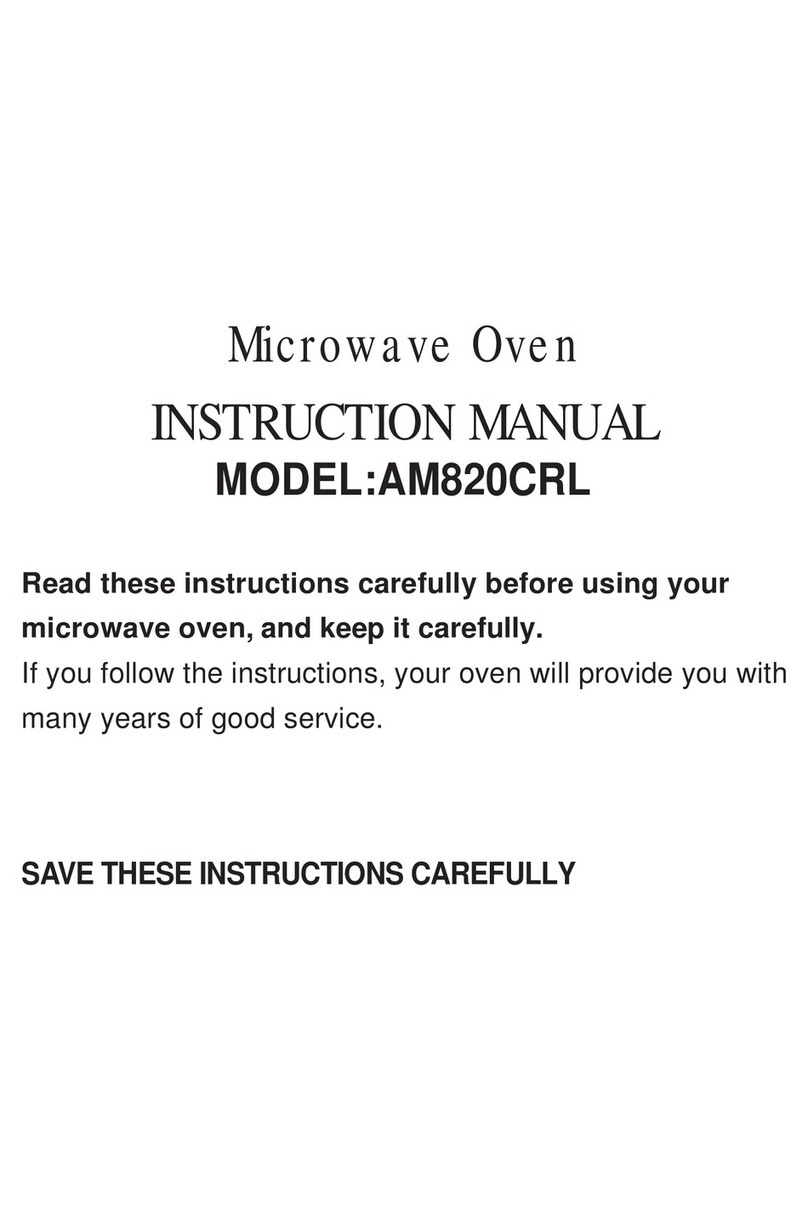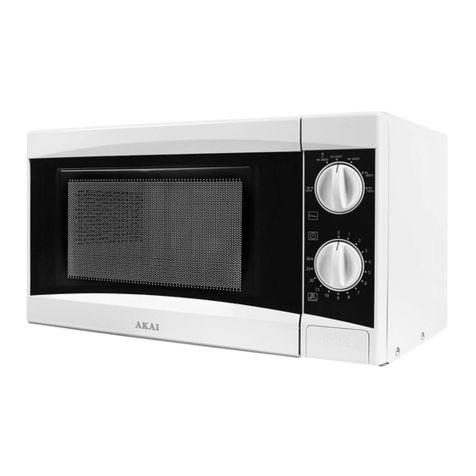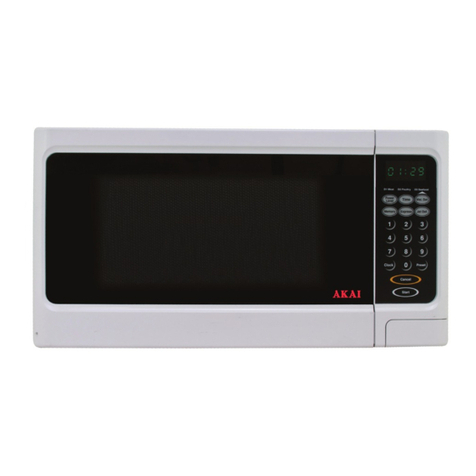2
Important Safety Instructions
Please keep this instruction manual in a safe place for future reference, along with your
warranty card, purchase receipt and packaging box. When correctly adhered to, these
safety instructions reduce the risk of fire, electric shock and injury or exposure to excessive
microwave energy:
1. Read all instructions before using the appliance.
2. Use this appliance only for its intended use as described in this manual. Do not use
corrosive chemicals or vapours in this appliance. This type of oven is specifically
designed to heat, cook or dry food. It is not designed for industrial or laboratory use.
3. Do not operate the oven when empty.
4. Do not operate this appliance if it has a damaged cord or plug, if it is not working
properly or if it has been damaged or dropped. If the supply cord is damaged, it must be
replaced by the manufacturer or its service agent or a similarly qualified person in order
to avoid a hazard
5. WARNING: Only allow children to use the oven without supervision when adequate
instructions have been given so that the child is able to use the oven in a safe way and
understands the hazards of improper use.
6. To reduce the risk of fire in the oven cavity:
• Whenheatingfoodinplasticorpapercontainer,checktheovenfrequentlytothe
possibility of ignition.
• Removewiretwist-tiesfrompaperorplasticbagsbeforeplacingbaginoven.
• Ifsmokeisobserved,switchofforunplugtheapplianceandkeepthedoorclosedin
order to stifle any flames.
• Donotusethecavityforstoragepurposes.Donotleavepaperproducts,cooking
utensils or food in the cavity when not in use.
7. WARNING: Liquid or other food must not be heated in sealed containers since they are
liable to explode.
8. Microwave heating of beverage can result in delayed eruptive boiling, therefore care
has to be taken when handle the container.
9. Do not fry food in the oven. Hot oil can damage oven parts and utensils and even result
in skin burns.
10. Eggs in their shell and whole hard-boiled eggs should not be heated in microwave
ovens since they may explode even after microwave heating has ended.
11. Pierce foods with heavy skins such as potatoes, whole squashes, apples and chestnuts
before cooking.
12. The contents of feeding bottles and baby jars should be stirred or shaken and the
temperature should be checked before serving in order to avoid burns.
13. Cooking utensils may become hot because of heat transferred from the heated food.
Pot-holders may be needed to handle the utensil.
14. Utensils should be checked to ensure that they are suitable for use in microwave oven.
15. WARNING: It is hazardous for anyone other than a trained person to carry out any
service or repair operation which involves the removal of any cover which gives
protection against exposure to microwave energy.
































